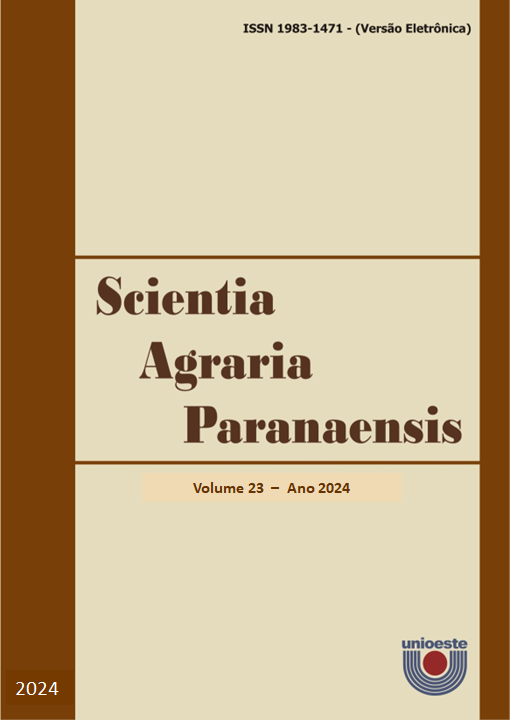Fractionation of inorganic phosphorus as a function of the application method of phosphate and Biomaphos® solubilizer
DOI:
https://doi.org/10.18188/sap.v23.31302Resumo
The mode of application, the source of P applied and the solubilizers alter the dynamics of P. The fractionation of P can help in understanding. The objective of this work was to evaluate the response of cultures and alterations in the forms of P as a result of the modes of P application and use of the Biomaphos® solubilizer. The design was randomized blocks in split plots: plot-application mode (100% P broadcast on the surface, 100% in the sowing furrow, ½ broadcast and ½ in the furrow, without P); subplot–with and without Biomaphos®), with seven replicates. The soil under study was the Dystroferric Latosol Red. For soybean and bean crops, productivity (kg ha-1), P content in the grain and leaf (g kg-1) and, in the soil, the fractionation of inorganic P - PiH2O, PiAl, PiFe, PiCa - (mg kg-1), were evaluated. Only the application method of phosphate fertilizer changed productivity. The use of Biomaphos® promoted a positive effect on P content in leaves, for 100% of phosphate fertilizer in the row in both crops and, ½ the row + ½ broadcast for beans. The lowest averages of P content in grains occurred in the treatment without P. In beans, without addition of P, there was an increase in the PiFe fraction and a decrease in PiCa, influenced by the use of Biomaphos®. The application methods and the use of Biomaphos® increased productivity, by one bag per hectare in soybean and two in beans.
Downloads
Publicado
Como Citar
Edição
Seção
Licença
Aviso de Direito Autoral Creative Commons
Política para Periódicos de Acesso Livre
Autores que publicam nesta revista concordam com os seguintes termos:
1. Autores mantém os direitos autorais e concedem à revista o direito de primeira publicação, com o trabalho simultaneamente licenciado sob a Licença Creative Commons Attribution que permite o compartilhamento do trabalho com reconhecimento da autoria e publicação inicial nesta revista.2. Autores têm autorização para assumir contratos adicionais separadamente, para distribuição não-exclusiva da versão do trabalho publicada nesta revista (ex.: publicar em repositório institucional ou como capítulo de livro), com reconhecimento de autoria e publicação inicial nesta revista.
3. Autores têm permissão e são estimulados a publicar e distribuir seu trabalho online (ex.: em repositórios institucionais ou na sua página pessoal) a qualquer ponto antes ou durante o processo editorial, já que isso pode gerar alterações produtivas, bem como aumentar o impacto e a citação do trabalho publicado (Veja O Efeito do Acesso Livre).
Licença Creative Commons
Esta obra está licenciada com uma Licença Creative Commons Atribuição-NãoComercial-CompartilhaIgual 4.0 Internacional, o que permite compartilhar, copiar, distribuir, exibir, reproduzir, a totalidade ou partes desde que não tenha objetivo comercial e sejam citados os autores e a fonte.


